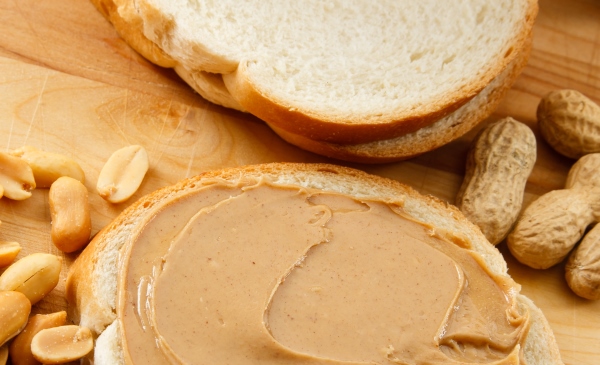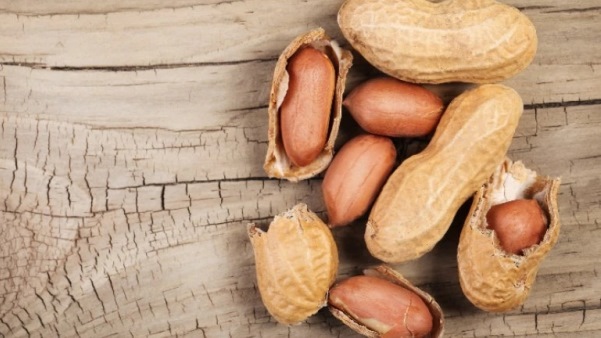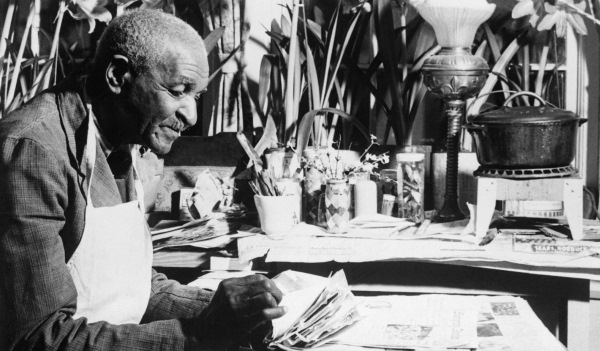Tomorrow – the 24th of January- is perhaps my favourite food holiday of the year.
Peanut Butter Day!

Yep, a whole day devoted to just peanut butter! I’m seeing parades with beige banners, complete with majorettes tossing their batons whilst smiling through clenched jaws because their teeth are stuck together with the ol’ pb, and Peter Pan scarfing contests. The works.
I absolutely adore peanut butter, you see. I can go months without sex, but not without peanut butter. It is, for me, the mortar on which the bricks of my life are placed – the greatest solace and greatest reward. And, in a rare show of patriotism on my part, it absolutely must be American.
None of that organic crap for me. That peanut butter that separates in the jar, and tastes gritty and flat even when you stir it back together. Nope. My peanut butter requires the added salt and sugar, and the emulsifying agent that makes it so smooth. Because for me, smooth it must be. And there’s a reason, it turns out, why only American peanut butter works. It’s all about history. So come with me now as we take a skip through the history of the peanut, and the ensuing butter.
First off, let’s dispel a myth or three.
- The peanut is not a nut, but rather a pea.
- George Washington Carver did not, as many believe, invent peanut butter.
- Peanut butter is not, high in fat though it may be, bad for you.

Shall we begin? The peanut is the pea (or seed) of a plant native to South America, where it had been a basic part of food culture for centuries, even depicted in the oft-noted “Pre-Colombian Art”. When the Spanish-and then Portuguese- explorers, well, “explored”, they learned of the nut, and then exported it to both Africa and Asia, where it quickly gained popularity as a food staple. Such that many people believe it’s been a part of their respective cultures for centuries before it was even introduced. Like the chili, it’s a fascinating example of how certain ingredients and flavours that we intrinsically associate with Eastern food, actually came from the West.
Now here’s where the history gets really bleak. The peanut (and its uses thereof) did not flow northwards into the nascent United States from South America. Instead, it came back across the Atlantic with the slave trade and was culturally re-discovered – though not until the mid 19th century when we get to Mr. Carver.

Mr. Carver. An astonishing man and an exemplary human being by any measure — he flatly refused to accept a patent for any of his many food-based innovations, saying “God gave me the idea, how could I sell it to another man?” But by the time he began his research into peanuts and their uses in 1903, peanut butter as we know it had been around for (depending on accounts) at least 50 years.
Certainly, the Brothers Kellogg had been producing it as part of their health regime in Battle Creek by the 1890’s, and even before that, a Mr. Hoyle had produced a similar product as a vegetarian dietary supplement for people with bad teeth. There are even reports of a woman in New York in the 1840s whose son had visited Cuba and seen young women grinding peanuts into a paste and spreading it on bread, and who had then tried the same application herself. In fact, at the Louisiana Purchase Exposition in 1904, peanut butter got its first mass-market airing-along with the hot dog and the ice cream cone- and was a roaring success.
Initially, peanut butter was much like the “organic” products we suffer through today. It was produced by a roasting and grinding process, and the end-product tended to separate unless it was refrigerated. It wasn’t until the 1920s that someone realized that you could emulsify it with added oil, and the first shelf-stable peanut butter was introduced. This new process also involved whipping the butter, instead of just grinding it, and resulted in the creamy texture we have today.
The best-selling brand of peanut butter in the US today is JIF, who also own the largest single peanut-processing plant in the world. China, however, having taken whole-heartedly to the peanut as a nation (though they prefer them boiled instead of roasted), now produces more peanuts than any other country in the world.
The peanut itself- and its butter, as it turns out- is one of the oddly healthiest foodstuffs in the world. High in fat, peanuts may be, but it’s the very healthy monounsaturated kind of fat that’s terribly good for you. Where peanut butter gets slightly dodgy is in the emulsifying agent, which is another kind of oil- often palm or rapeseed. There are claims that both have trans-fatty acids, which are bad. But a recent US survey found that there were, at most, negligible traces of trans-fats in US produced peanut butter, which also requires a 90% peanut content and no artificial flavourings, additives, or preservatives.
The UN deliver a product called Simply’nut to children in Third World countries. Having a peanut butter base, it provides basically all the nutrients and proteins of a diet rich in meat and eggs, and is stable for up to two years without refrigeration, apparently.
Now the above is certainly a potted history of peanut butter, so hie thee to Wikipedia and the like if you want to learn more. And here’s my recipe for the absolutely perfect midnight snack if you’re feeling peckish whilst you learn, though it’s even better in bed, with a good book.
You will need:
- 1 jar creamy US peanut butter
- 1 spoon
- 1 big mug of milk
Open jar. Insert spoon. Scoop peanut butter into mouth, alternating with glugs of milk when appropriate.

